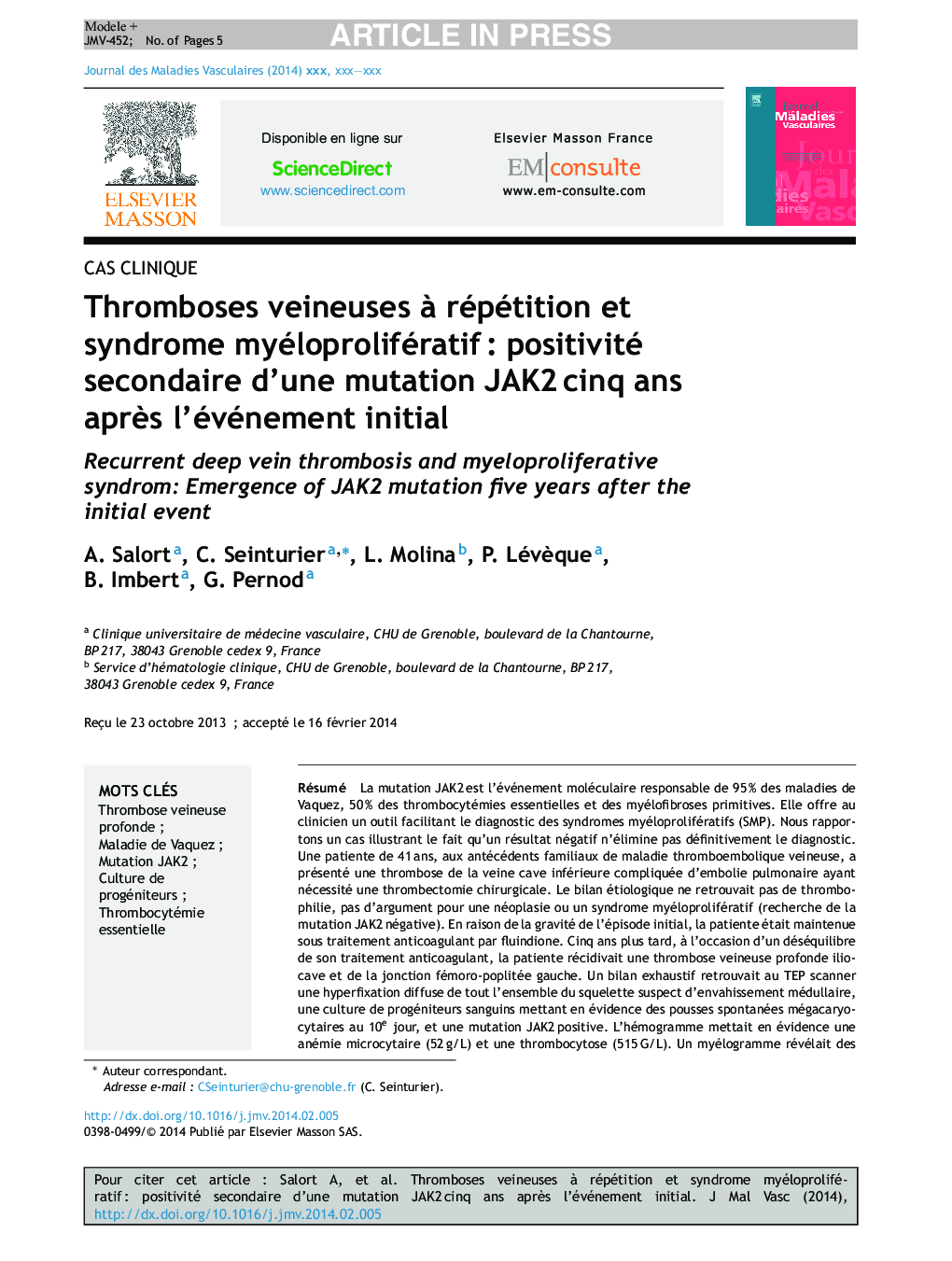| Article ID | Journal | Published Year | Pages | File Type |
|---|---|---|---|---|
| 2974725 | Journal des Maladies Vasculaires | 2014 | 5 Pages |
Abstract
JAK 2 mutation is the molecular event responsible for 95% of polycythemia cases and 50% of thrombocythemia vera and myelofibrosis cases. It can be used as a tool for the diagnosis of myeloproliferative disorders. We report a case illustrating the fact that a negative result does not definitively eliminate the diagnosis. A 40-year old woman, with a medical history of familial deep vein thrombosis, developed thrombosis of the inferior vena cava with extension to the suprahepatic veins and pulmonary embolism. No constitutional or acquired thrombophilia was diagnosed; search for JAK 2 mutation was negative. The patient was treated with fluindione. Five years later, she relapsed with popliteo-femoral and vena cava deep vein thrombosis. The etiological work-up included a PET scan which revealed diffuse uptake in bones and suspected neoplasic bone marrow invasion. Progenitor cell cultures were positive and JAK 2 mutation was confirmed. The bone marrow aspirate had the cytologic appearance of a myeloproliferative disorder. This case illustrates the fact that JAK 2 mutation can be identified several years after onset of a latent myeloproliferative disorder. Cases with a high clinical likelihood should lead to renewed search for this mutation. Secondary discovery of this mutation can be explained by a higher proportion of mutation expressing clones.
Keywords
Related Topics
Health Sciences
Medicine and Dentistry
Cardiology and Cardiovascular Medicine
Authors
A. Salort, C. Seinturier, L. Molina, P. Lévèque, B. Imbert, G. Pernod,
